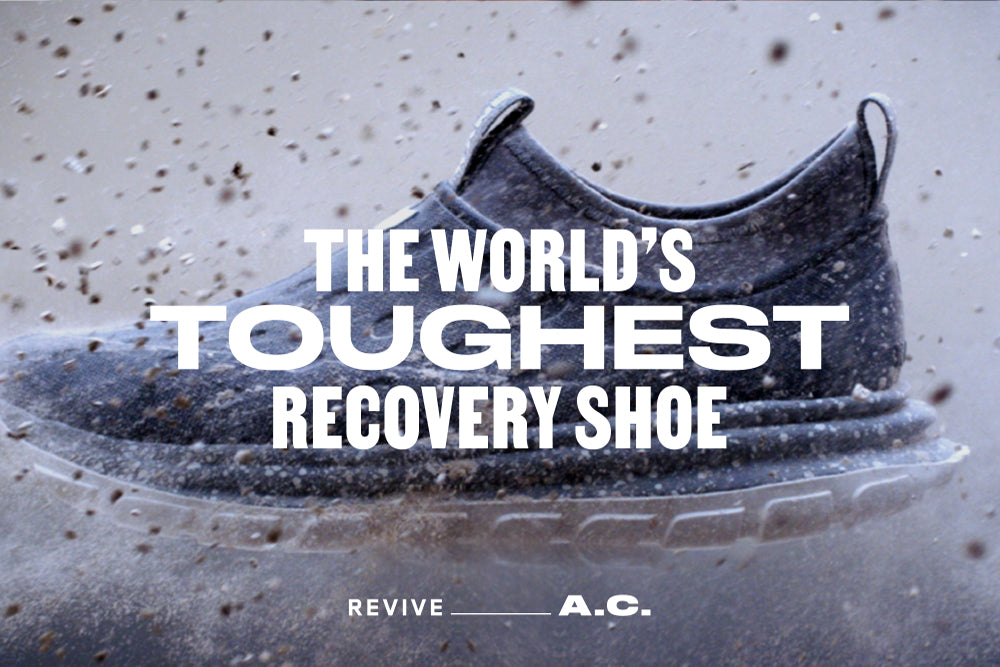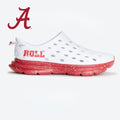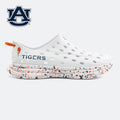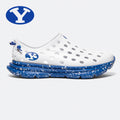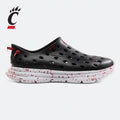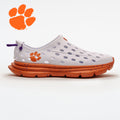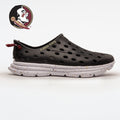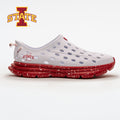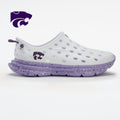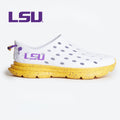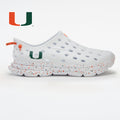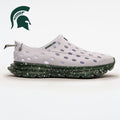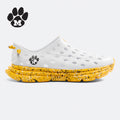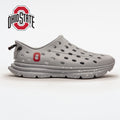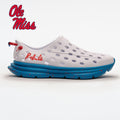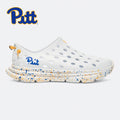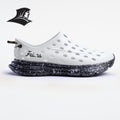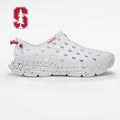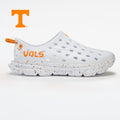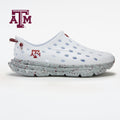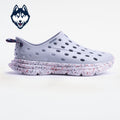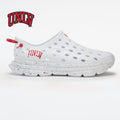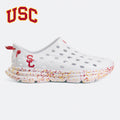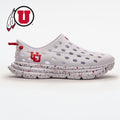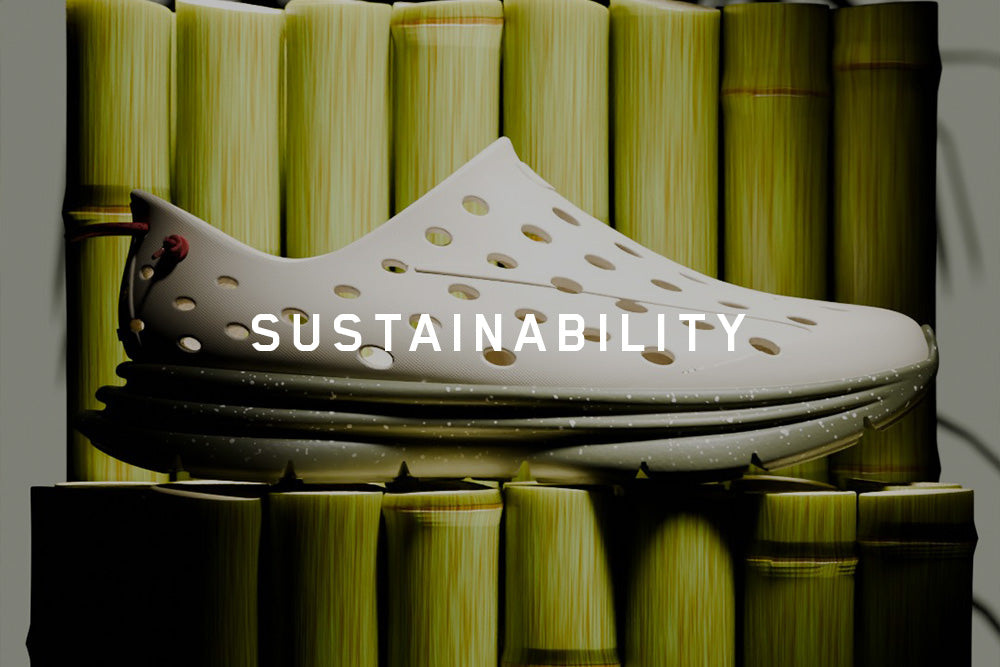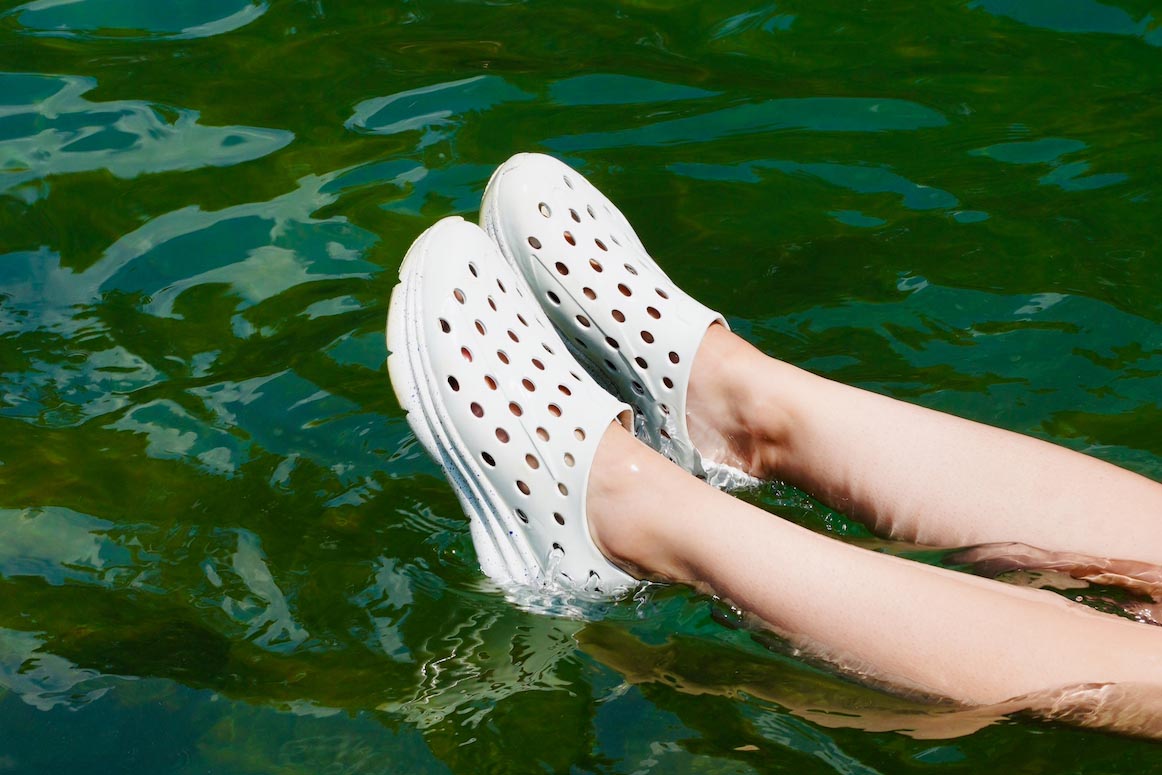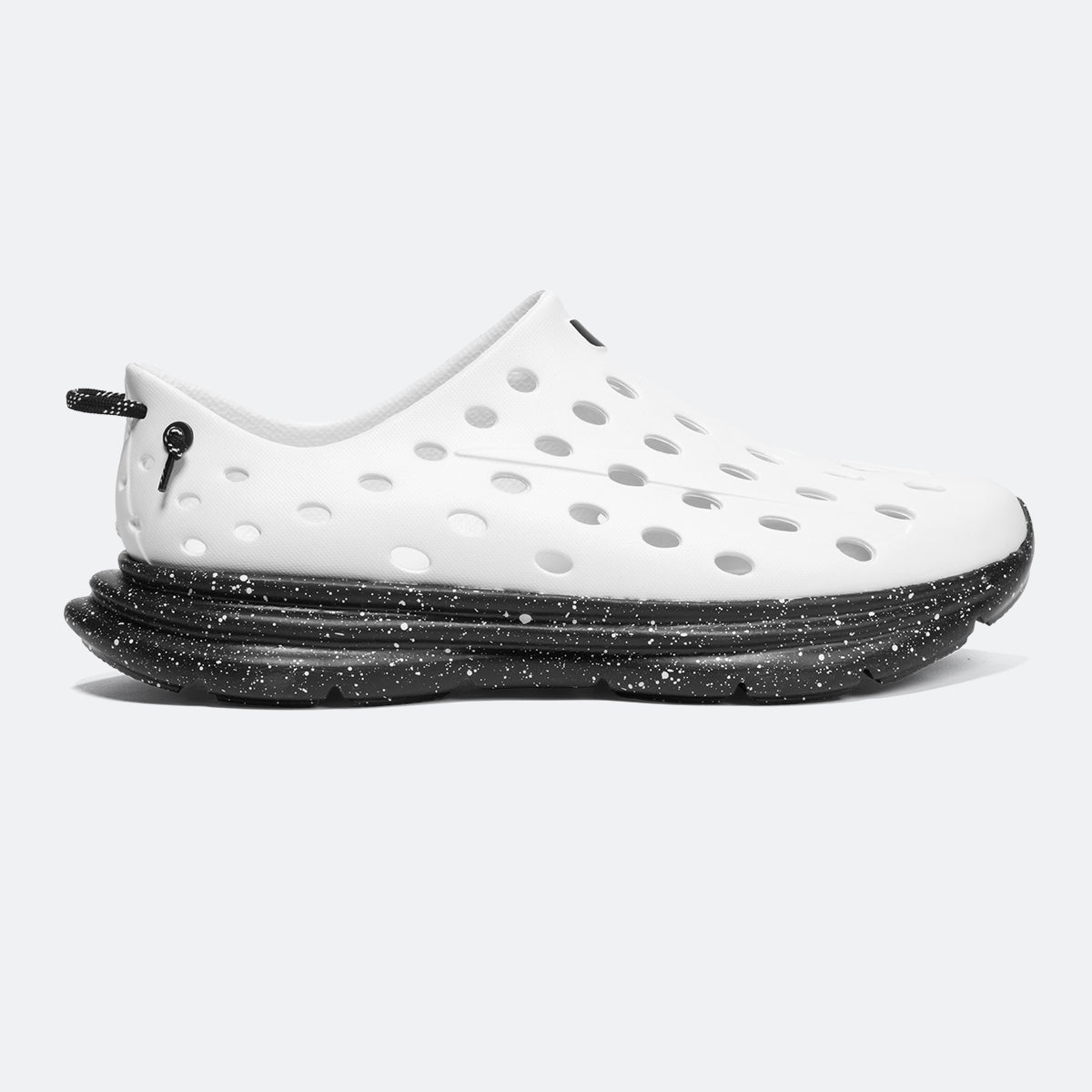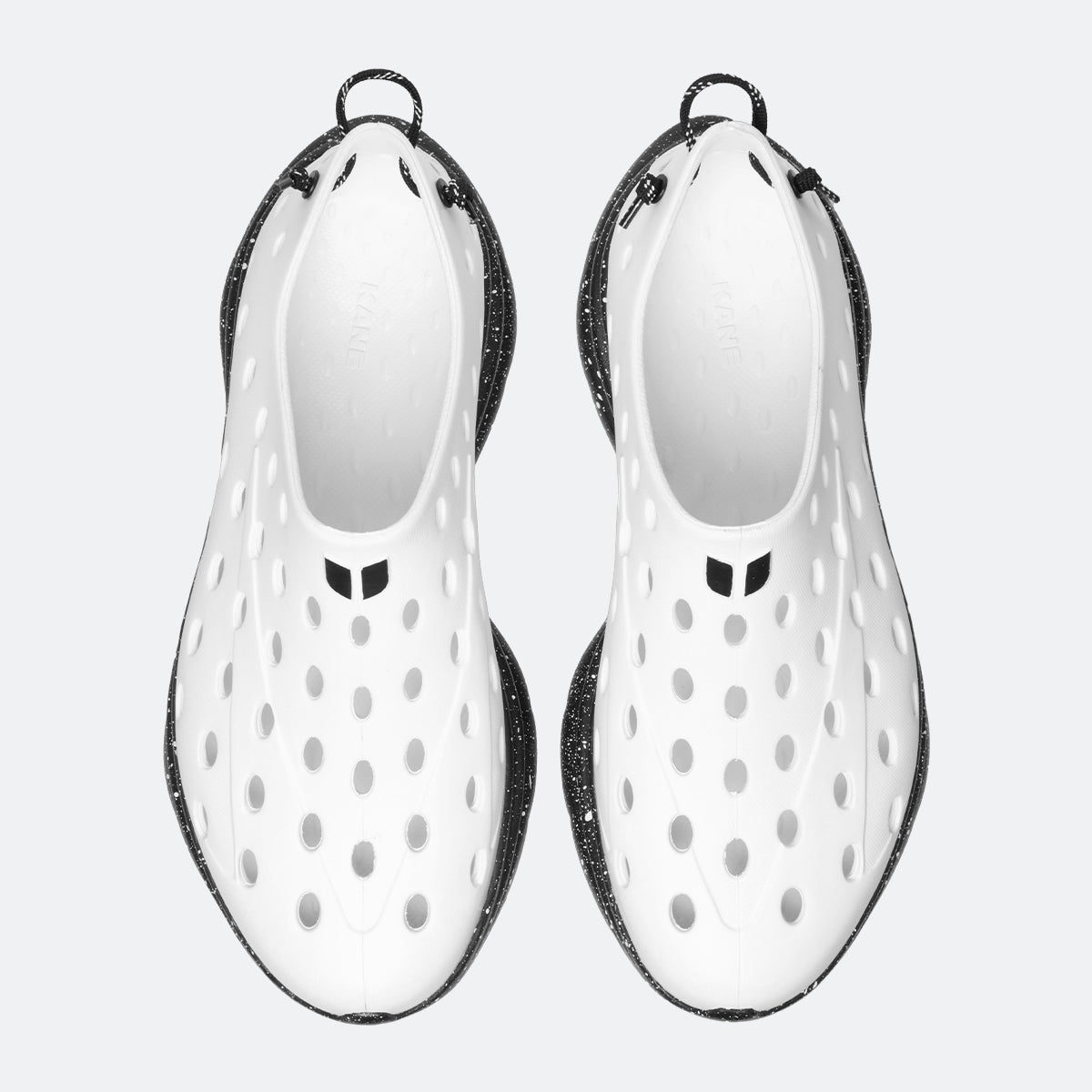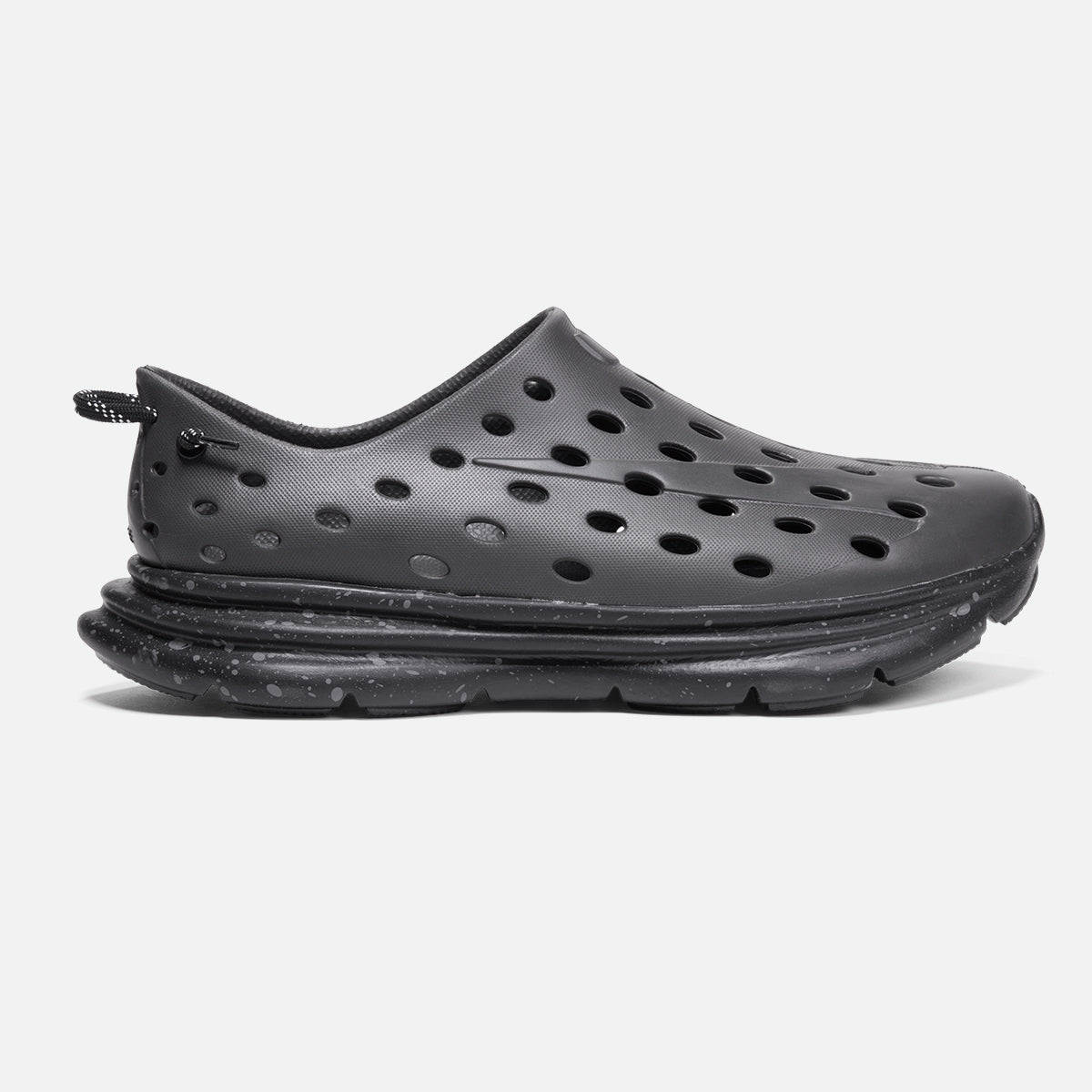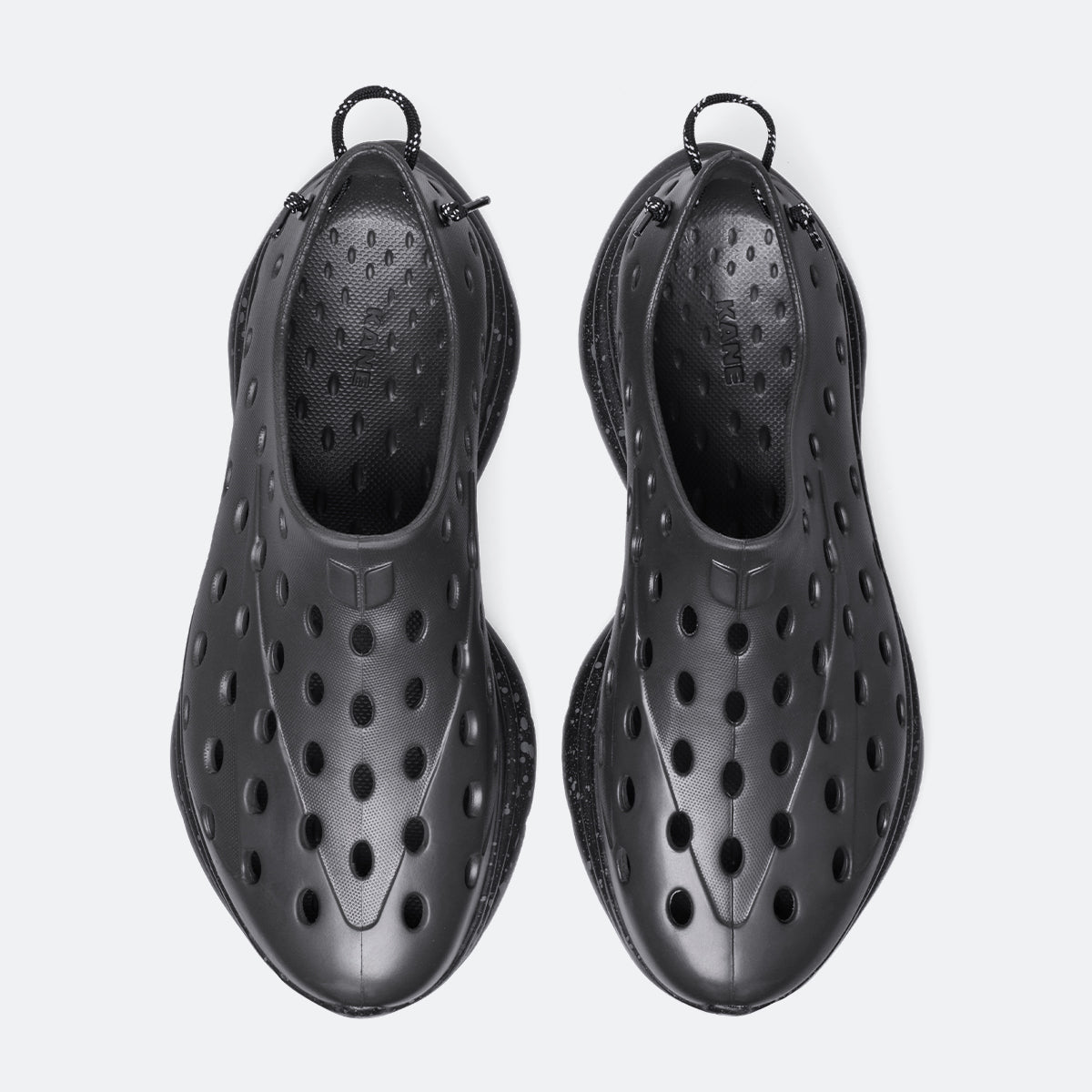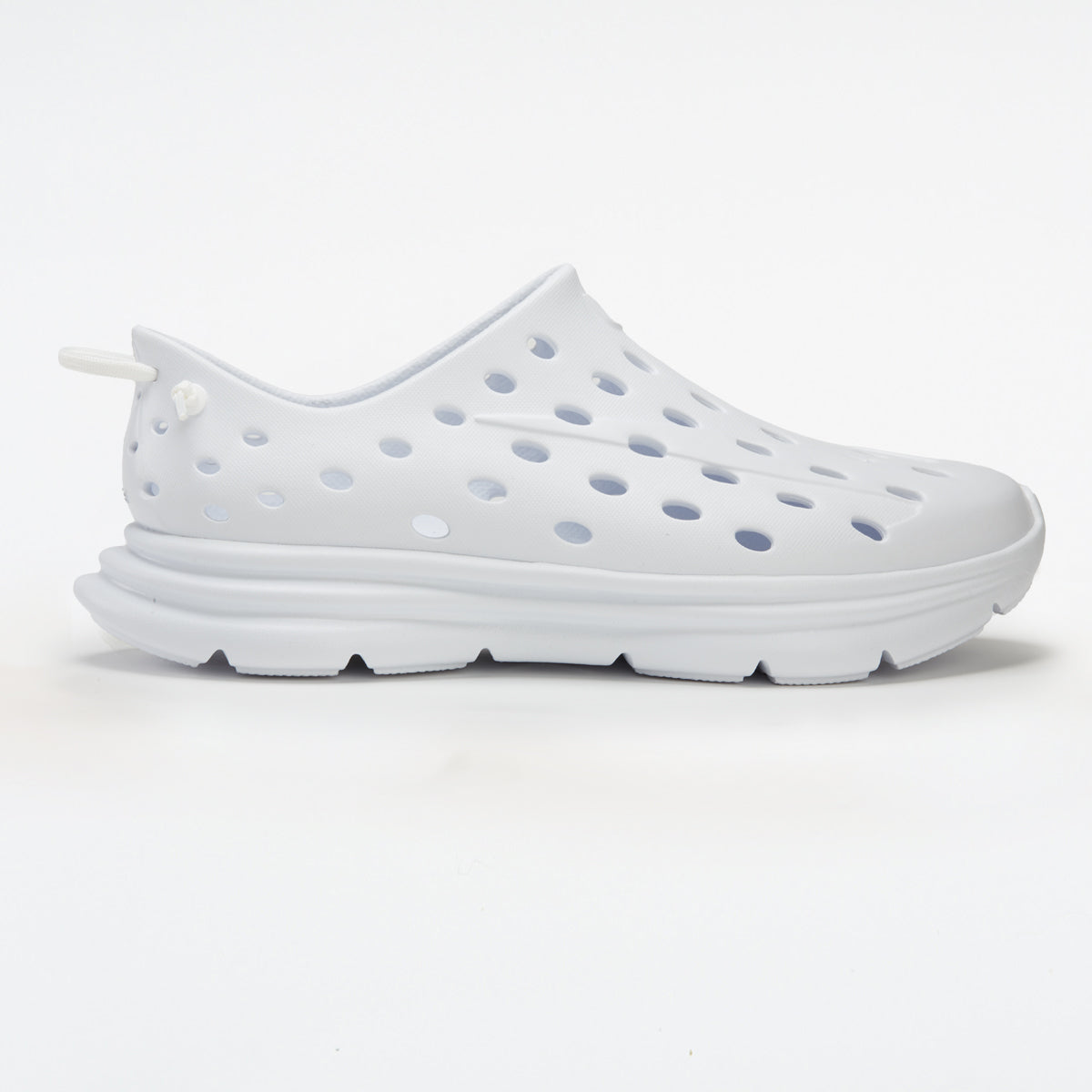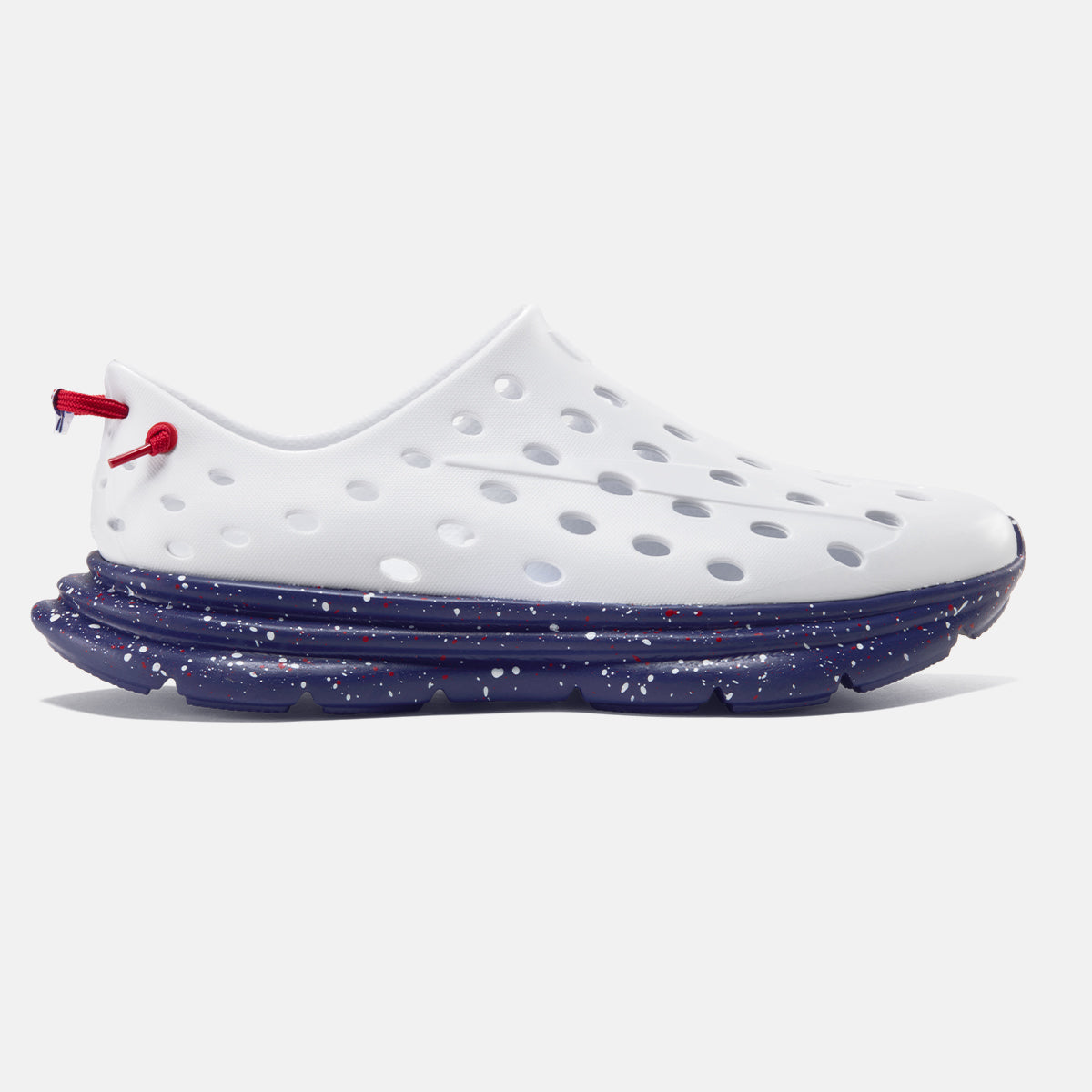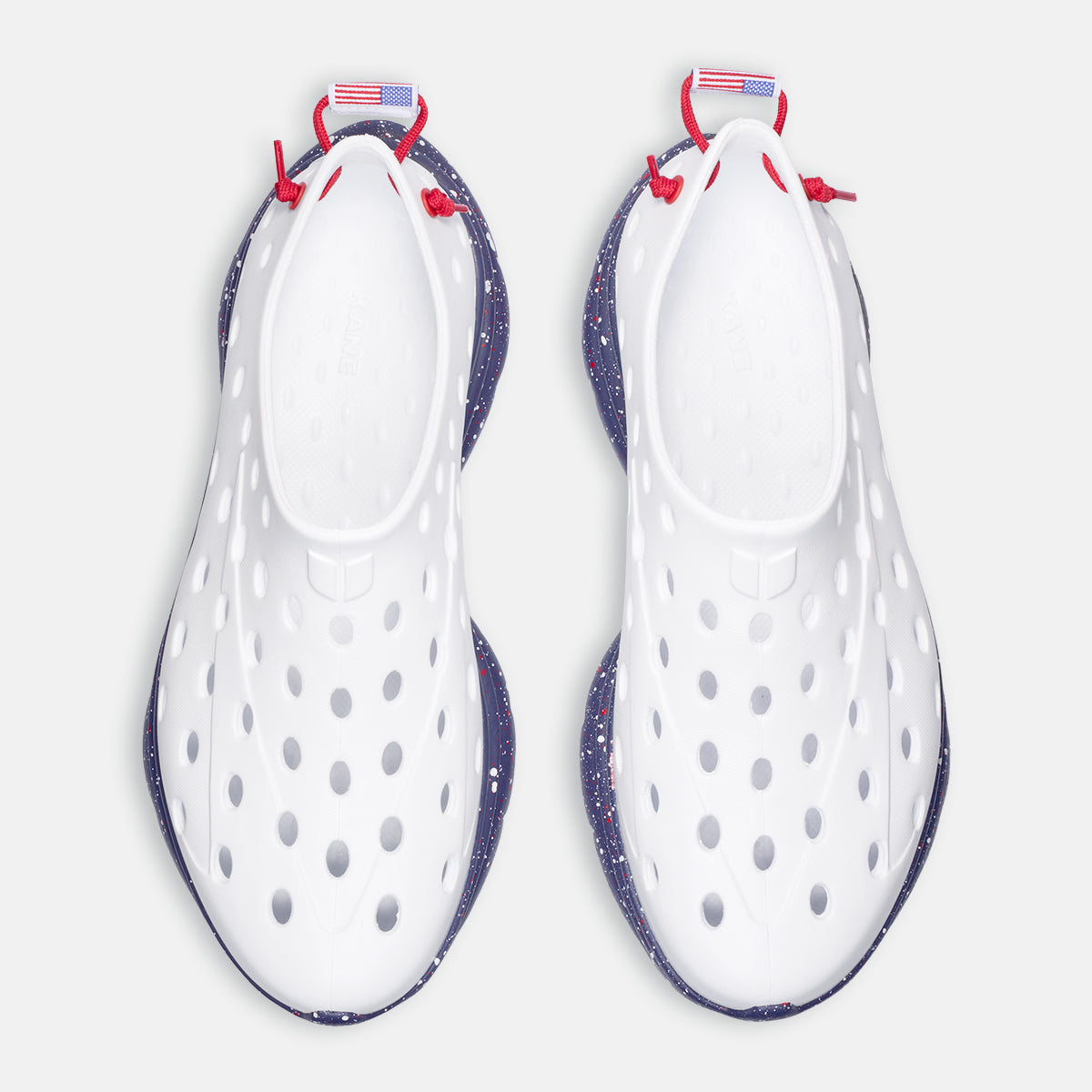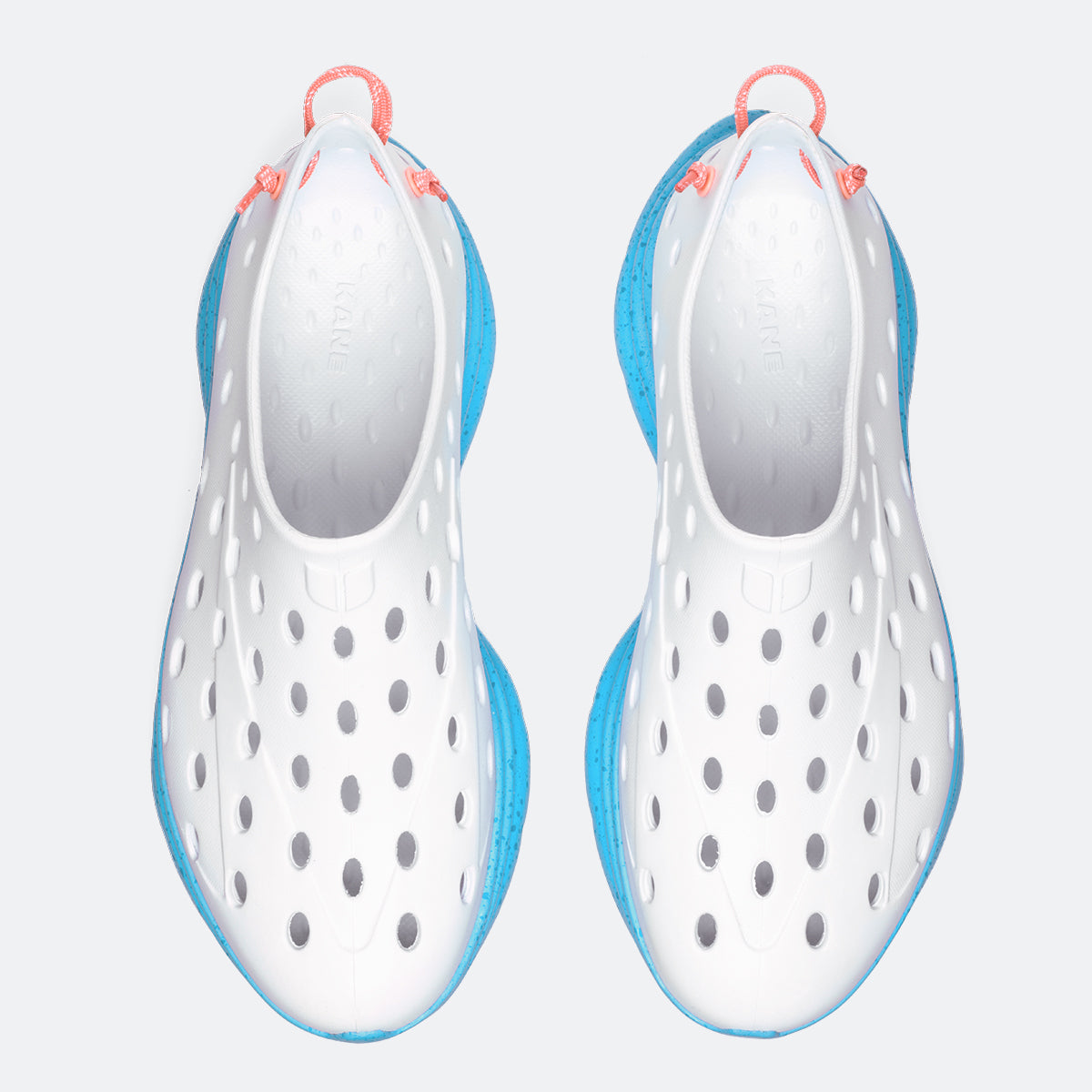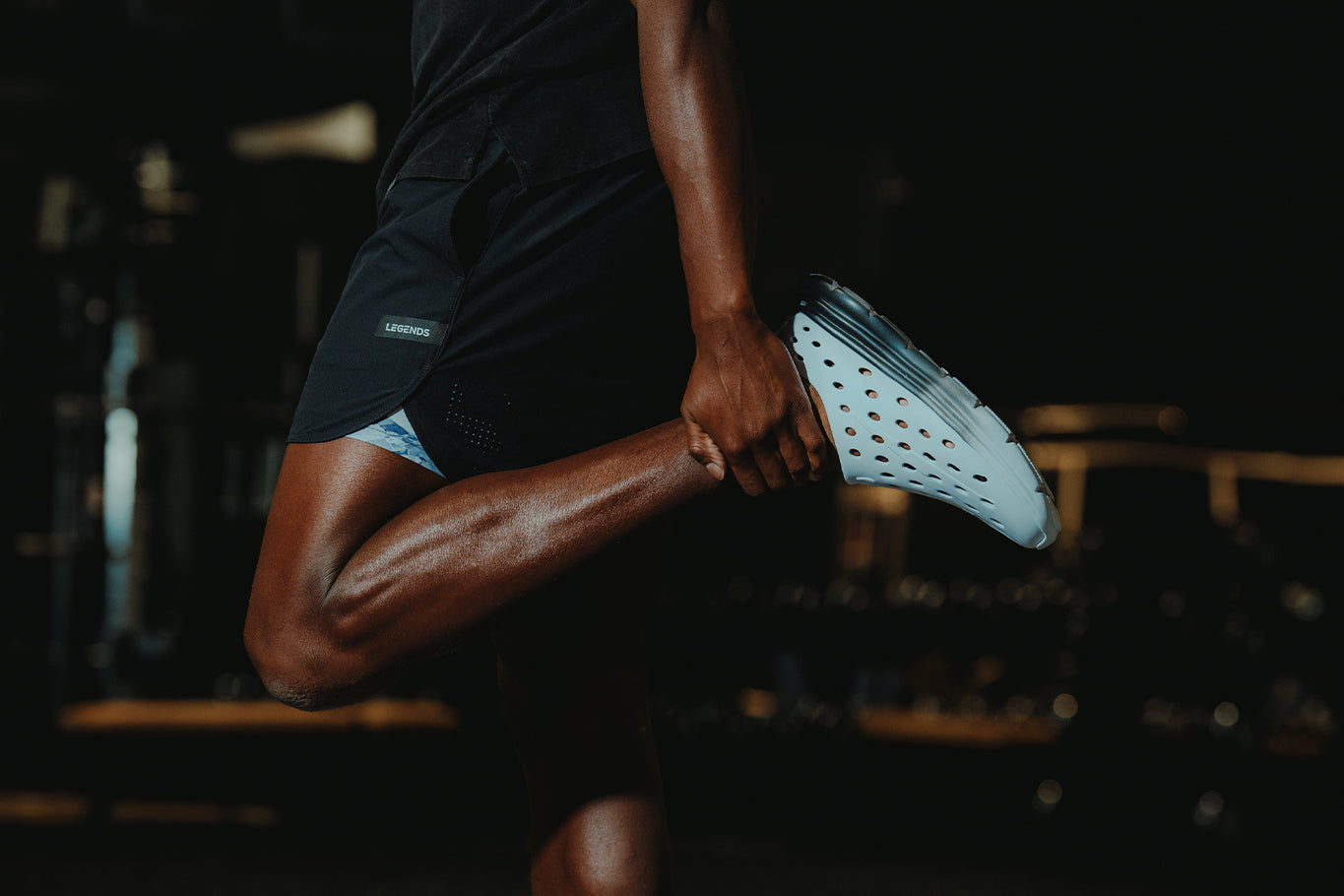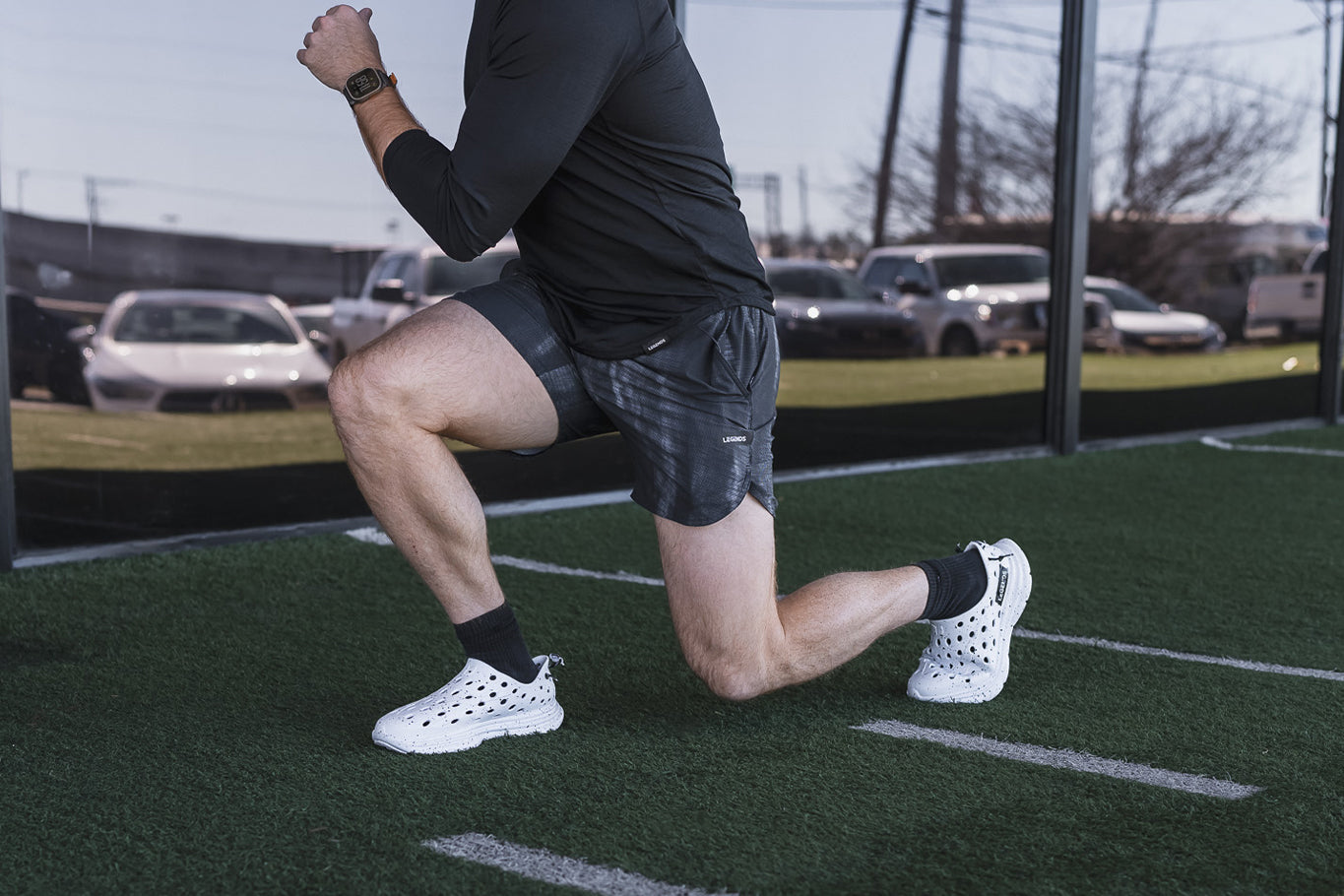When it comes to footwear, comfort and durability are king, and that's where the magic of EVA soles comes into play. EVA, or ethylene-vinyl acetate, has unique properties. It's a lightweight, flexible, and shock-absorbent material that's revolutionized the shoe industry, which is why we use it in our Kane Revive Active Recovery Shoe.
Ever wondered, "What is an EVA sole?" Imagine walking on clouds—EVA soles make it possible by providing exceptional cushioning and bounce in every step.
From running shoes that propel athletes to casual sneakers perfect for a day out, EVA soles are the unsung heroes ensuring your feet stay happy and fatigue-free. Dive into the world of EVA soles and discover why they might just be the best thing to happen to your footwear.
What is EVA sole material?
Ethylene-vinyl acetate is a type of plastic, specifically a copolymer, that combines the properties of both rubber and plastic. It has significantly impacted the shoe industry, particularly in the design and construction of shoe soles.
EVA is a versatile and widely used material. Shoemakers prize it for being light, flexible, and shock-absorbant. While it offers many benefits, including comfort and cost-effectiveness, it has potential drawbacks, including grip limitations on slippery surfaces.
Understanding the role of ethylene-vinyl acetate in footwear allows you to make more informed choices and appreciate the technology behind your favorite pair.
How are EVA soles made?
Shoemakers craft EVA soles through a fascinating process that combines chemistry and engineering. It starts with ethylene-vinyl acetate copolymers, which are mixed and melted together. This molten material is then injected into molds, forming the initial shape of the shoe sole. Through a process called foaming, tiny bubbles are introduced, giving the soles their characteristic lightweight and cushioned feel. After cooling and solidifying, the soles are trimmed and finished, ready to provide exceptional comfort and support in various types of footwear.
Benefits of EVA shoe soles
EVA is a superior choice for sole materials because of its good cushioning, flexibility, and lightweight properties. It's naturally stretchy and durable enough to withstand daily wear and tear while providing excellent shock absorption, making it perfect for everything from athletic footwear to casual kicks. With EVA soles, every step feels like a breeze, blending comfort and resilience in every stride.
A few reasons for its popularity include:
1. Cushioning
EVA is renowned for its excellent cushioning and shock-absorbing properties, making it ideal for midsoles in athletic footwear and hiking boots. Its properties reduce the strain on the feet during high-impact activities and minimize the risk of injuries.
2. Lightweight
EVA foam is significantly lighter than traditional materials like rubber, reducing the shoe's overall weight. This lightness minimizes fatigue during long days on your feet or strenuous physical activities.
3. Energy return
Ethylene-vinyl acetate has good energy return characteristics, meaning it can bounce back to its original shape after being compressed. This quality provides a responsive and energetic feel during activities like running long distances on rough terrain.
4. Comfort and conformity
EVA foam's soft and flexible nature allows it to conform to the foot's shape, providing a comfortable and customized fit. This quality makes it the ideal material for use in insoles and footbeds.
5. Durability and water resistance
While not as heavy-duty as natural rubber, EVA foam is durable and exhibits excellent stress-crack resistance in challenging conditions. It's highly resistant to environmental factors like water and UV rays, extending the footwear's lifespan.
6. Versatility and customizability
Manufacturers can customize ethylene-vinyl acetate's density, hardness, and color, making it adaptable for various types of footwear, from casual sandals to high-performance recovery shoes.
7. Cost-effectiveness
EVA foam is relatively cost-effective compared to other specialized materials, making it an affordable choice for shoe manufacturers and consumers alike.
8. Waterproof and moisture resistance
Due to its closed-cell structure, EVA foam is waterproof and moisture-resistant, making it suitable for outdoor and water-related activities.
Types of footwear using EVA
EVA is a commonly used material in various types of footwear because of its light weight, flexibility, and ability to absorb shock.
Athletic shoes like running and cross-training sneakers often feature EVA in midsoles, and casual styles such as everyday sneakers and slip-ons benefit from its comfort and support.
Prized for being a flexible material, EVA is also common in sandals, flip-flops, and work and safety boots, providing a comfortable, hard-wearing footbed. Recovery shoes like Kane's also use it in a durable injected EVA outsole. Overall, EVA's versatility makes it popular across different shoe categories.
Here are some examples of styles of shoes that incorporate EVA soles:
Athletic shoes
Running shoes often feature EVA midsoles for shock absorption during high-impact activities. The cushioning helps reduce stress on the feet, ankles, and joints.
Cross-training and gym shoes use EVA for its responsive cushioning and flexibility, allowing natural foot movement during workouts.
Basketball shoes employ EVA to provide cushioning, structural integrity, and support during quick movements and jumps on the court.
Casual shoes
Everyday sneakers and slip-on shoes frequently have EVA footbeds or midsoles for lightweight comfort and support.
Sandals and flip-flops commonly use EVA footbeds for their cushioning and moldability, allowing them to conform to the foot's shape.
Work and safety shoes
Work boots and safety shoes often incorporate an EVA midsole or footbed to cushion and support those who spend long hours on their feet.
Recovery shoes
Shoes specifically designed for post-workout recovery, like our Kane Revive Active Recovery Shoe, utilize durable injected EVA outsoles for comfort and support during recovery.
Children's shoes
EVA's lightweight and shock-absorbing nature makes it a popular choice for children's shoes, helping protect growing feet from impact.
EVA's versatility lends to its use in various shoe styles, from athletic footwear requiring high-performance cushioning to casual and work shoes where comfort and support matter. Its moldability also enables manufacturers to create unique sole patterns and textures tailored for specific activities or terrain.
Discover Kane Recovery Shoes!
Step into our Kane Revive Active Recovery Shoe, and you’ll never turn back. Designed for breathability and offering the perfect balance of support and cushion, these shoes provide the comfort you deserve.
Kane's recovery shoes provide excellent support, comfort, and durability for those needing top-notch recuperative footwear. Featuring an adjustable hook-and-loop single-strap synthetic upper, plush TPR footbed, and durable injected EVA outsole, these kicks come with all the right features to assist you during your rehabilitation journey.
Aside from providing quality products, they are also committed to sustainability, having made plans to become a B Corp while dedicating 1% of their overall profits towards environmental charities.
When and how to wear Kane Revive
The best moment to wear most recovery shoes is directly after a strenuous activity such as running or exercising. This helps minimize inflammation and launch the healing process. To guarantee maximum comfort and effective recuperation, make sure that you are wearing your recovery footwear correctly by tying up laces securely for a snug fit.
Frequently asked questions
Is ethylene vinyl acetate a good sole material?
EVA is considered one of the best materials for many shoes, particularly athletic and casual footwear. Here are the key advantages of EVA soles:
- Lightweight and flexible: EVA is much lighter than a traditional rubber sole, making shoes with EVA soles feel less cumbersome and more comfortable for activities like walking, running, or standing for extended periods. The material is also flexible, allowing the sole to bend and flex with the foot's natural motion.
- Shock absorption: One of EVA's primary benefits is its excellent shock absorption capabilities. The foam-like structure of EVA helps cushion impact and reduce stress on the feet, ankles, and joints. Its shock absorption makes EVA soles ideal for running shoes and other athletic footwear where impact protection is crucial.
- Moldability: EVA can be easily molded into various shapes and designs, allowing for unique sole patterns and textures. This versatility enables manufacturers to create soles tailored for specific activities or terrain.
- Water repellant: EVA is water-resistant, making it suitable for footwear you plan to wear in wet conditions or for outdoor activities.
Is EVA good for your feet?
Yes, EVA is great for your feet! Its lightweight, cushioned nature provides excellent shock absorption, reducing strain on your joints and muscles. EVA's flexibility allows it to adapt to your foot's natural movements, offering superb comfort and support. Whether you're walking, running, or just on your feet all day, EVA soles make every step more comfortable, keeping your feet happy and well-cared for.
What are the disadvantages of EVA soles?
EVA stands as a popular choice for shoemakers. Despite its numerous benefits, it does have some potential drawbacks compared to rubber soles:
- Durability: While making for a durable shoe, EVA soles tend to break down and compress faster than rubber soles, especially under heavy use or exposure to heat. As a result, you may need to replace footwear with EVA soles more frequently.
- Traction: Rubber soles (or those made of synthetic rubber or rubber-like material) generally provide better grip and traction on various surfaces, especially on rough or slick ones. While offering some slip resistance, EVA soles can be slippery on wet or icy surfaces or during harsh conditions when compared to rubber outsoles.
Overall, EVA is an excellent sole material for lightweight, cushioned footwear designed for activities like walking, running, or casual wear. Rubber soles may be a better choice for more demanding conditions or activities requiring maximum durability and better traction.
What are the benefits of EVA insoles?
EVA insoles offer a range of practical benefits. They provide excellent cushioning, making each step feel softer and reducing the impact on your joints. Lightweight yet sturdy, they add minimal weight to your footwear while standing up well to regular use. Their flexibility ensures they conform to the natural movement of your feet, enhancing comfort throughout the day. With EVA insoles, you gain a supportive shoe that provides long-lasting comfort, making them an ideal choice for everyday footwear.
What shoe types use EVA?
EVA soles are used in various footwear, benefiting from the material's unique qualities. Athletic shoe makers embrace EVA for its cushioning and lightweight feel—qualities perfect for running and training. Wearers of casual sneakers benefit from EVA's comfort, making daily walks a pleasure. Even sandals and flip-flops use EVA for a plush, supportive base. From a high-performance running shoe to everyday kicks, EVA soles elevate every step with a blend of comfort and durability.
What's better: EVA or rubber soles?
Both EVA and rubber have advantages and potential drawbacks, making them suitable for different applications and preferences. Ultimately, base the decision on your needs, activities, intended use, and personal preferences.
Take the following factors into consideration when choosing between the two to decide on the best material for your purposes:
- Durability: Rubber soles are generally more resistant to wear and tear than EVA soles. They can withstand abrasion and maintain their structure for longer, making them a better sole material for heavy use.
- Cushioning: EVA soles provide superior softness due to their lightweight, foam-like structure. This structure makes EVA an ideal choice for athletic footwear, especially for long-distance runners, where impact protection and comfort are crucial.
- Traction and grip: A rubber outsole offers better traction and grip on challenging surfaces, including wet or slippery conditions. This quality makes them more suitable for outdoor activities or environments where slip resistance is essential.
- Weight and flexibility: EVA soles are significantly lighter and more flexible than rubber soles, allowing for a more comfortable and natural foot movement. Their light weight can be beneficial for activities that require agility and flexibility.
- Sustainability and environmental impact: Rubber soles generally have a lower environmental impact than EVA soles, as rubber can be sourced from natural materials and is more biodegradable.
- Cost and value: While EVA soles may be cheaper initially, rubber soles tend to offer better long-term value due to their durability and longevity.



